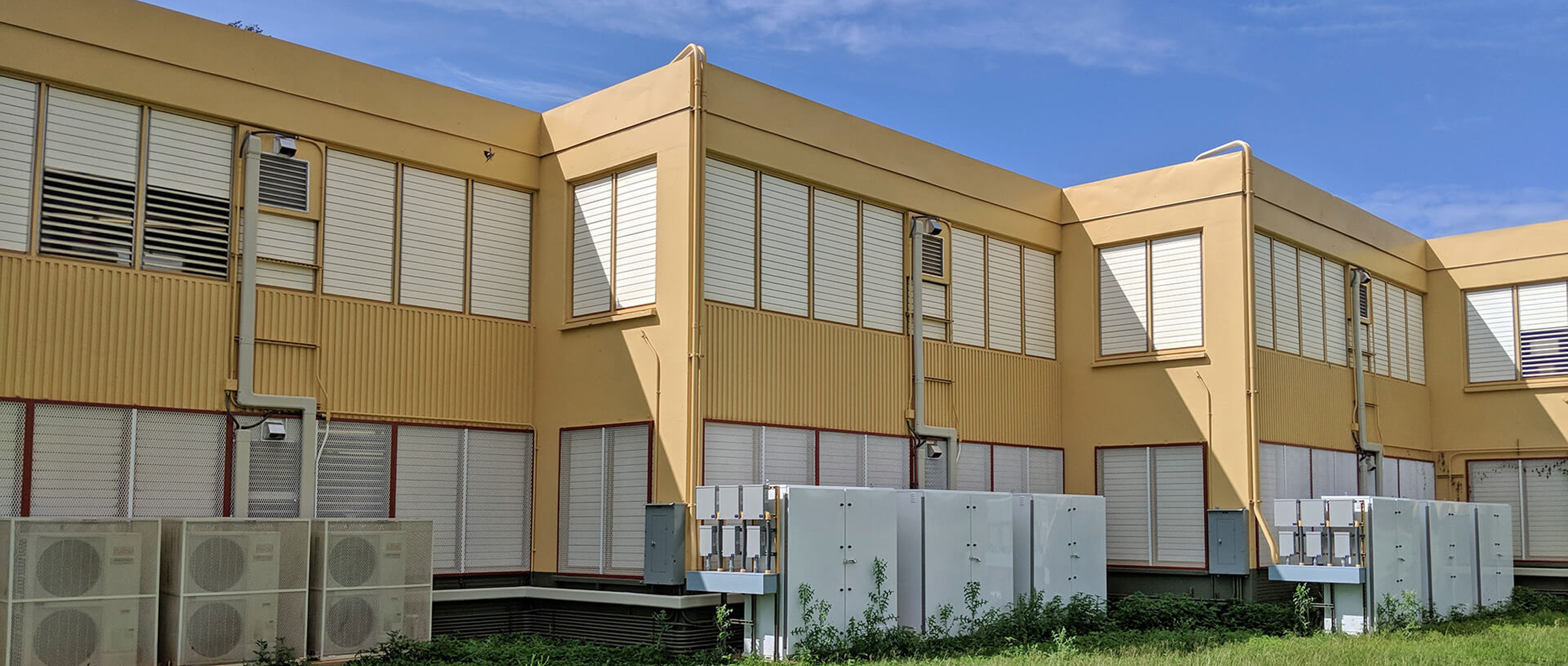When Energy Upgrades Prove Cost Prohibitive, Microgrids Offer Another Path for Sustainability
The statewide Hawaii Department of Education spends approximately $62 million each year on energy -- reflecting a 50 percent increase over the last 10 years. There are 256 public schools in the system housed in buildings that on average are 50 years old.
In the summer of 2015, Hawaii faced a record-breaking heatwave. When schools started in August, classroom temperatures were above 90º F, and students and teachers were showing signs of heat exhaustion. The conditions weren’t entirely new -- as students and teachers had first protested hot classrooms in 2013. By 2015, the public demanded action.

The problem HIDOE faced was the $1.7 billion price tag for 100% air conditioning conversion for all schools -- including the installation of the air conditioning units as well as essential associated upgrades to school infrastructure. Older schools couldn’t handle the additional load of new A/C -- with some classrooms already struggling to support the loads of computer use with only four outlets per classroom. Building envelope retrofits would also have been required, such as to existing louver windows. Once installed, operating costs were further predicted to spike utility bills, as previous experience saw full a/c retrofits double a school’s electricity costs.
Like so many school systems across the U.S. and beyond, upgrading and installing energy efficient HVAC and other energy equipment in the face of shrinking budgets, escalating electricity bills and aging infrastructure was simply out of reach.
The state legislature was able to allocate $100 million to cool Hawaii’s classrooms, but with the requirement that A/C implementations not increase electricity costs.
With a limited budget and energy use constraints to contend with, HIDOE found a game-changing solution by using microgrids with rooftop PV and distributed energy storage to power new split system air conditioning units to cool individual classrooms. The capital cost of implementing these microgrid systems was substantially lower than the cost to retrofit traditional central air systems, by avoiding costly building upgrades. Plus, having on-site energy storage and flexibility in programming the power electronics allowed schools to keep their current energy costs and energy access stable while maintaining grid-connection for backup power.

Students at Hawaii’s Waialua High and Intermediate on the island of O’ahu returned to school in 2017 to solar PV and SimpliPhi-branded energy storage-powered air conditioned classrooms from project partners SimpliPhi (acquired by Briggs & Stratton in 2021), Haleakala Solar and Ameresco Solar.
Each of the 21 cabinets located at the school is built to house either seven or 10 PHI 3.4kWh batteries as part of a hybrid, solar powered off-grid system for two or four ton air conditioners, respectively. The cabinet-based systems are designed to hold up to 16 batteries to streamline future expansion.
An installation at Ewa Beach Elementary followed, with 15 separate systems on four buildings. Each system included an OutBack Radian 8048 inverter, 3 OutBack FM80 CC's, 7 PHI 3.4kWh batteries, 45 PV modules (11.7 kWdc), all to power a 1 Fijitsu Airstage J11 4 ton A/C unit. Backup power was provided from grid with a 50A circuit that could be used to charge the batteries at night if necessary.
SimpliPhi (acquired by Briggs & Stratton in 2021) is the ideal storage solution for HIDOE for three reasons:
- PHI batteries perform very well in temperatures up to 140º F, which is crucial when systems in hot climates must be installed in outdoor cabinets.
- PHI batteries also have no risk of overheating, thermal runaway, or catching fire so student safety is assured.
- The reliability and long life of 10 years/10,000 cycles at 80% DOD ensures that the system pays for itself in a reasonable time -- before the end of its useful life.
So far, 1,267 Hawaii classrooms are now cooled by solar+storage enabled A/C and the HIDOE has seen energy costs fall by more than $2 million. SimpliPhi (acquired by Briggs & Stratton in 2021) and our project partners are continuing to deploy systems at other Hawaii schools.

Request a Commercial Consultation
Talk with a Briggs & Stratton energy expert by clicking the button below and provide basic information about your upoming project!



